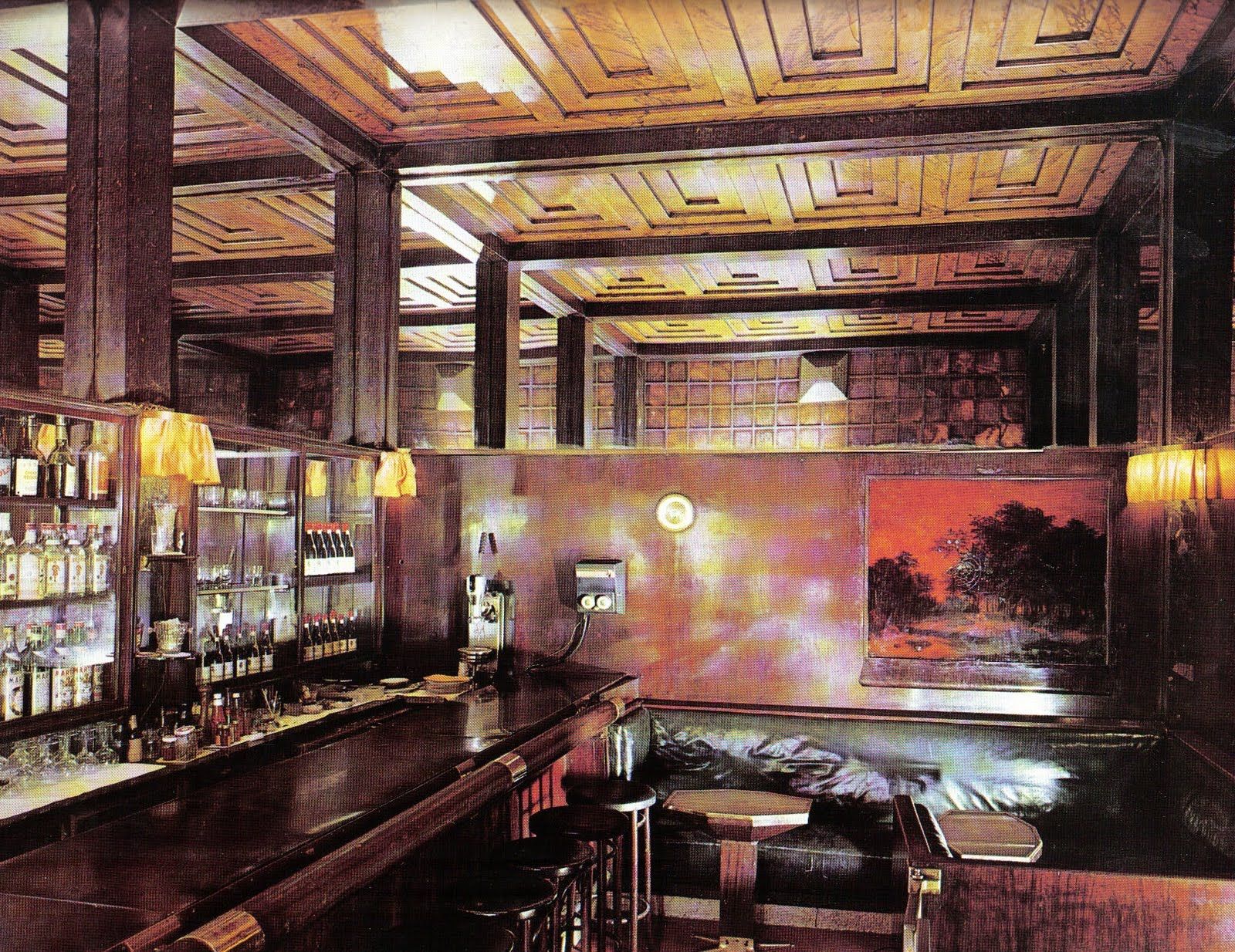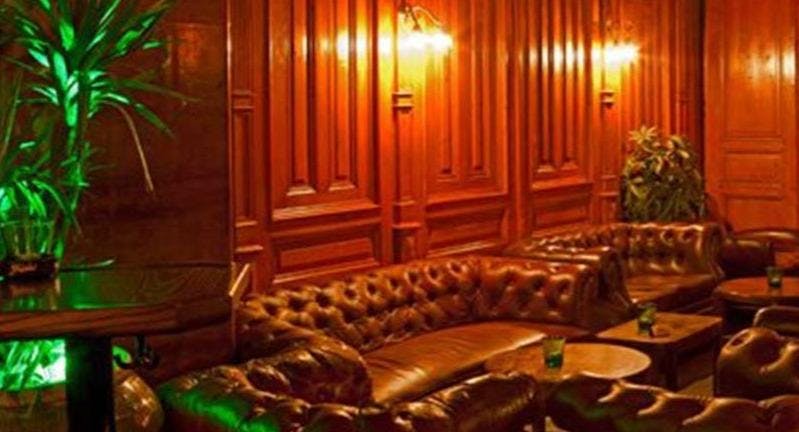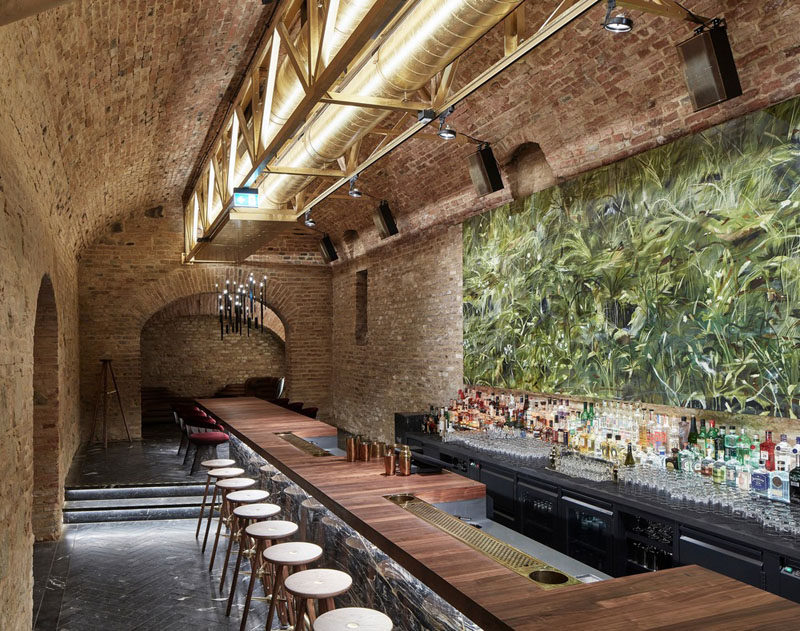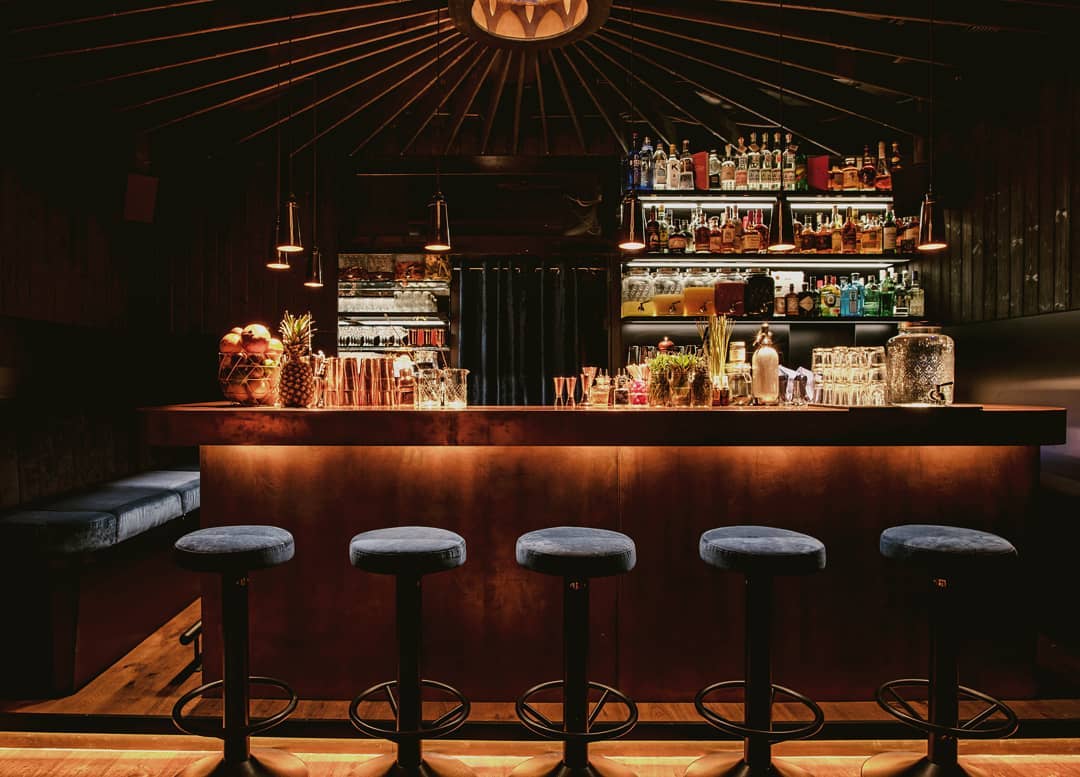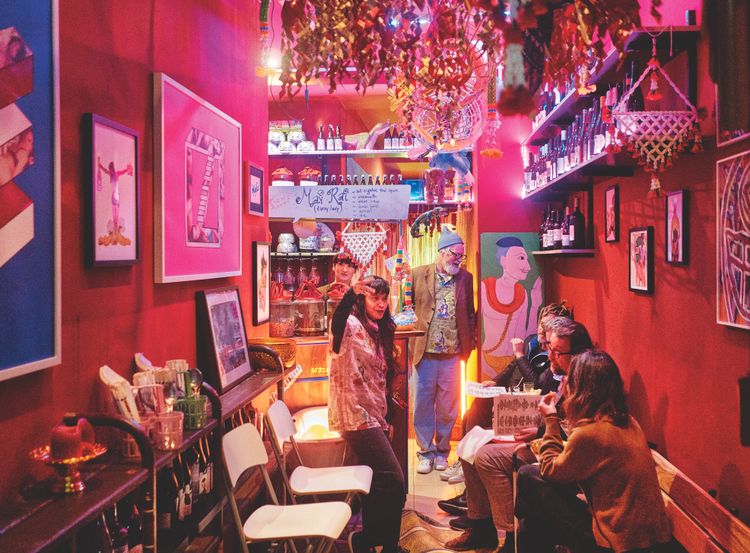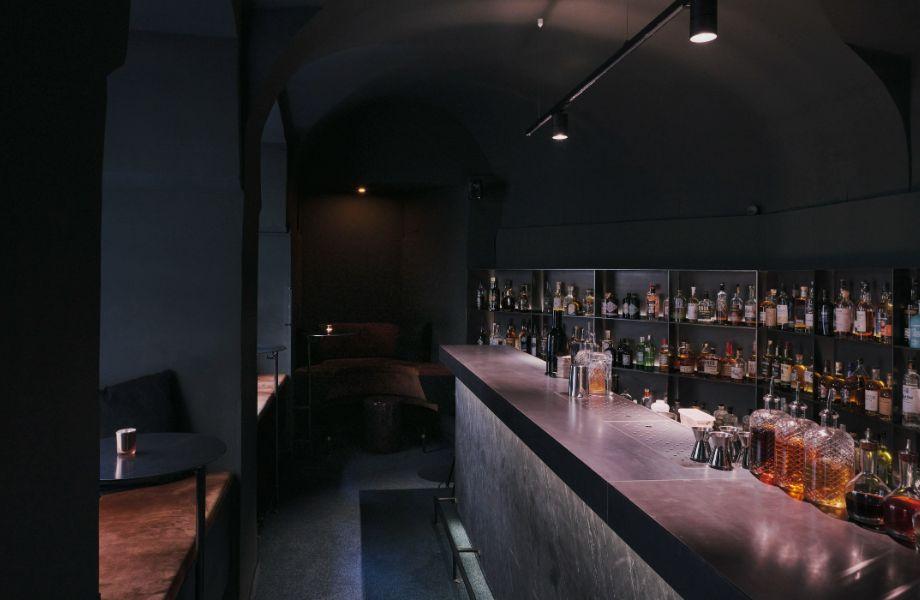Located in the heart of Vienna’s Innere Stadt, the Loos American Bar—also known as Loosbar—is Europe’s earliest true cocktail bar, designed by architect Adolf Loos in 1907–08 and opened in 1908. Constrained to just ~4.4 × 6.0 m (~27 m²), this tiny yet monumental bar feels much larger thanks to mirrored walls, coffered marble ceilings, green‑and‑white checkerboard marble floors, rich mahogany paneling, brass detailing, and backlit onyx above the entrance—elements that blend minimalism with indulgent geometry. Entering via a discreet side‑alley off Kärntner Straße, you pass beneath a striking mosaic of the American flag and the bar’s name mounted on marble pillars before stepping onto the checkerboard floor. Inside, a polished mahogany counter lines one side, opposite low green leather booths, glowing marble columns, and portraits—especially of poet Peter Altenberg—who once frequented the bar. Originally an exclusive male-only enclave, it became mixed-gender just weeks after opening. Closed during both World Wars, the bar was revitalised in 1995 under Marianne Kohn, who transformed it into a must-visit institution for locals and travelers alike. Patrons have included cultural figures like Jean Cocteau, Orson Welles, Cab Calloway, and Benjamin Britten—and its design has inspired replicas and exhibitions worldwide. Today, it is open daily from noon until 4 AM, bustling every evening despite its tiny footprint, with patrons squeezing in around an intimate bar counter and a handful of booths. It’s famed not just for cocktails but for its status as an original modernist pearl of Viennese nightlife.
Reviews
No reviews yet. Be the first to rate this bar and share your thoughts!

